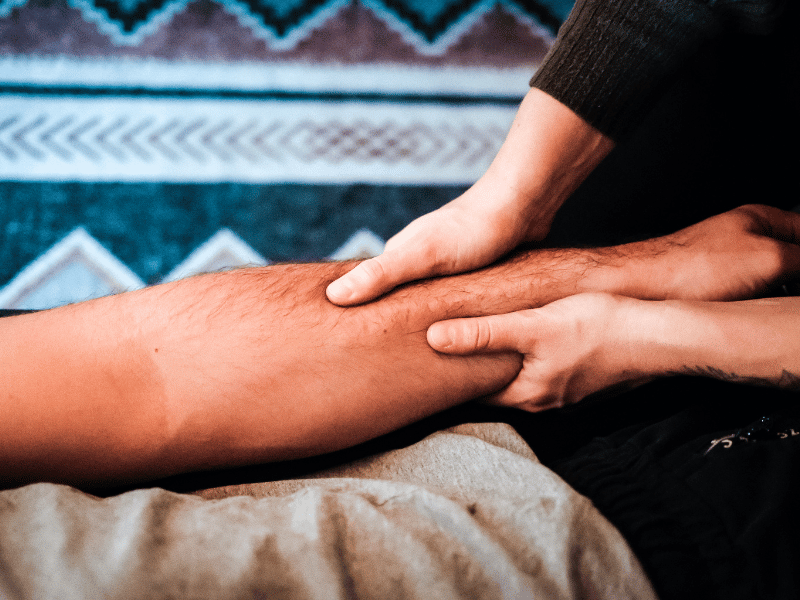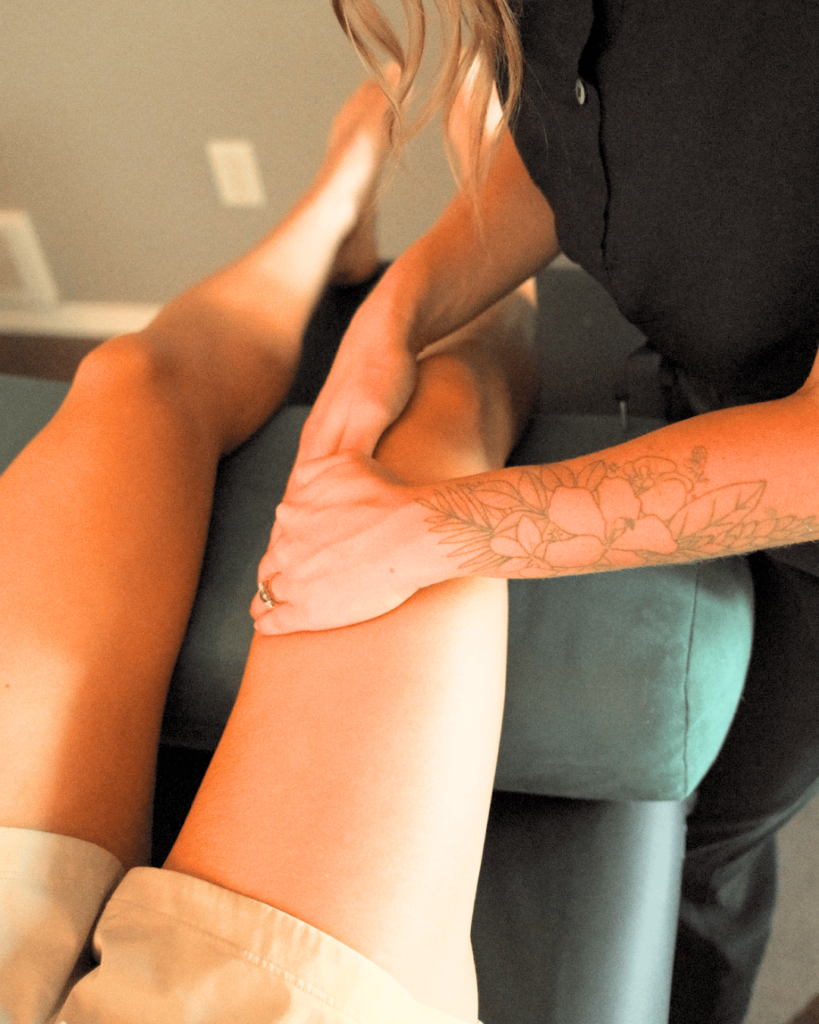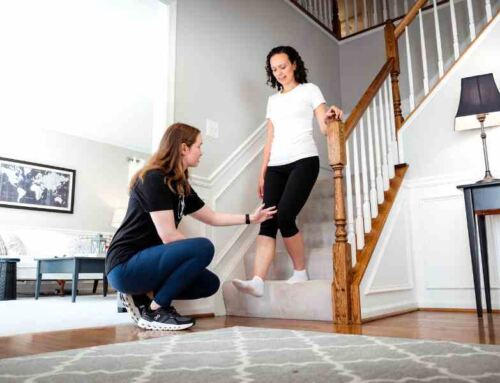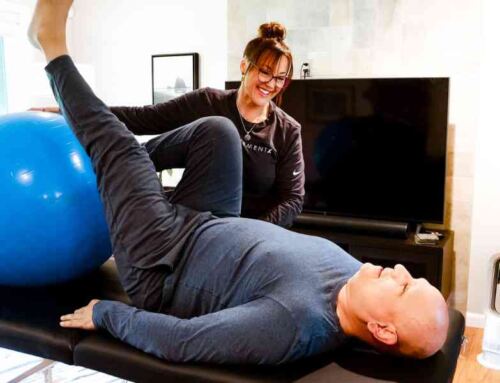How Physical Therapy Can Help Manage Lymphedema and Improve Lymphatic Health
At MovementX, we are passionate about providing care that improves lives. Our Certified Lymphedema Therapists (CLTs) specialize in helping individuals manage conditions that impact the lymphatic system, offering personalized, effective, and mobile care that comes to you. Whether you’re dealing with lymphedema resulting from cancer treatments, chronic conditions, or other health issues, we’re here to help.
Understanding the Lymphatic System: A Vital Part of Your Health
The lymphatic system plays a crucial role in your body’s immune system and fluid balance. It helps maintain overall health by:
- Maintaining fluid balance: It regulates the amount of fluid in your tissues.
- Transporting immune cells and nutrients: It moves white blood cells and other components needed to fight infections.
- Filtering out waste: It removes germs, dead cells, and toxins from your body.
The key components of the lymphatic system include:
- Lymph fluid: This clear fluid contains proteins, salts, water, and infection-fighting white blood cells. It travels throughout the body in a network of lymph vessels.
- Lymph vessels: These vessels transport lymph fluid. They contain one-way valves to keep the fluid moving in the right direction.
- Lymph nodes: These small, bean-shaped glands act as filters, trapping germs, waste, and other harmful substances. Lymph nodes are located throughout the body, including the neck, armpits, chest, abdomen, and groin.
In many ways, the lymphatic system is similar to the cardiovascular system, as both transport fluids through a network of vessels. However, unlike the cardiovascular system, which has the heart to pump blood, the lymphatic system relies on:
- Lymph nodes: These act as stations to help move lymph fluid along.
- Muscle movement: Physical activity and muscle contractions are essential to keep lymph fluid circulating.
This unique design makes the lymphatic system susceptible to poor drainage if lymph nodes are damaged or removed, as seen with conditions like lymphedema (American Cancer Society, 2025).

What is Lymphedema?
Lymphedema is a chronic condition that occurs when the lymphatic system is damaged or obstructed, preventing lymph fluid from draining efficiently. This can lead to a buildup of fluid, most commonly in the arms or legs, but it can occur anywhere in the body. Left untreated, lymphedema can worsen, causing discomfort, restricted movement, and even permanent changes to the skin and tissues.
What Causes Lymphedema?
Lymphedema can result from cancer treatments or other disruptions to the lymphatic system. Key causes include:
- Surgery: Removal of lymph nodes, as seen in breast cancer, pelvic area cancers, or melanoma surgeries, can impair lymphatic drainage.
- Radiation therapy: Radiation can damage or scar nearby lymph nodes.
- Tumors: Growths can block lymph vessels or nodes, preventing proper drainage.
- Infections: Untreated infections can damage tissue and lymphatic vessels, leading to scarring and dysfunction.
- Trauma or injury: Physical damage to lymph vessels can disrupt fluid flow.
- Chronic conditions: Heart disease, vascular disease, arthritis, and eczema can impair lymphatic health.
- Genetic factors: Primary lymphedema, caused by inherited changes in lymphatic system genes, often develops without external triggers.
Symptoms of Lymphedema
Lymphedema symptoms often vary depending on the severity and location of the condition. Common signs include:
- Swelling, fullness, or heaviness: Often felt in the breast, chest, shoulder, arm, hand, leg, or foot.
- Skin changes: Dryness, discoloration, thickening, or dimpling of the skin.
- New sensations: Aching, tingling, numbness, or pain in the affected area.
- Reduced mobility: Limited range of motion or stiffness in nearby joints.
- Changes in clothing fit: Feeling clothes are tighter or noticing indents from rings, watches, or bracelets.
Lymphedema can also cause swelling in less common areas:
- Abdomen or genitals: After surgery or radiation near the pelvis or abdomen.
- Face or neck: Following head and neck surgeries.

The Importance of Preventative Care: Addressing Reversible Stages Early
Lymphedema progresses through stages, making early detection and treatment crucial. Preventative care can significantly reduce the risk of long-term complications, particularly during the reversible stages of the condition:
- Stage 0 (Subclinical):
- No visible swelling, but you may notice sensations of heaviness, fullness, or tightness in the affected area.
- This stage is entirely reversible if addressed early.
- Stage 1 (Mild):
- Swelling becomes visible and the affected area may feel heavy or tight.
- Swelling often improves with elevation of the limb.
- At this stage, lymphedema remains reversible with proper treatment, including manual lymph drainage (MLD) and compression therapy.
- Stage 2 (Moderate):
- Swelling worsens and does not improve with limb elevation.
- Symptoms are more persistent, but early intervention can still achieve significant improvements.
- Stage 3 (Severe):
- Extreme swelling limits daily activities.
- Skin becomes thickened, discolored, or even leaks fluid.
- At this stage, lymphedema is typically irreversible, though symptoms can be managed with consistent care.
Why Proactive Care Matters
By seeking care early—particularly during Stage 0 or Stage 1—patients can prevent lymphedema from progressing to more severe stages. Establishing a relationship with a Certified Lymphedema Therapist before symptoms arise allows for:
- Risk monitoring: Regular evaluations can detect changes early.
- Preventative strategies: A CLT can teach you techniques, exercises, and lifestyle changes to maintain lymphatic health.
- Better outcomes: Early intervention during reversible stages often results in more effective treatment and improved quality of life.
The American Cancer Society emphasizes that early detection and preventative care are critical for managing lymphedema and avoiding permanent damage (American Cancer Society, 2025).
How Physical Therapy With MovementX Can Help
Our Certified Lymphedema Therapists use Complete Decongestive Therapy (CDT), the gold standard for lymphedema treatment. This comprehensive approach includes:
1. Manual Lymph Drainage (MLD)
A gentle, hands-on technique that stimulates lymphatic flow and reduces swelling. This specialized therapy differs from general lymphatic massage and is tailored to your unique needs, ensuring optimal and safe results.
2. Compression Bandaging
Compression bandaging plays a vital role in the initial, intensive phase of lymphedema treatment. After MLD reduces swelling, bandaging prevents fluid from re-accumulating. Our approach involves:
- Multi-layer bandaging with short-stretch materials, cotton, and foam to create a gradient that supports lymphatic flow.
- Adjustments as swelling decreases, ensuring the bandages fit effectively throughout treatment.
- Education for self-bandaging, empowering patients to maintain their progress at home.
This phase is critical until the limb stabilizes and can be fitted with a custom maintenance garment, which provides long-term support and prevents recurrence. The transition from bandaging to a garment is a collaborative process, ensuring comfort and compliance.
3. Decongestive Exercises
Movement is key to promoting lymph flow. We guide you through exercises that enhance circulation while accommodating your physical abilities.
4. Long-Term Maintenance
Once swelling stabilizes, we help you transition to custom-fitted compression garments and provide a home care plan to maintain progress.
Our mobile model eliminates the barriers of travel and accessibility, making it easier for you to receive consistent care in the comfort of your home.

Beyond Lymphedema: Other Conditions We Treat
At MovementX, our expertise goes beyond lymphedema. We also provide care for a range of conditions that impact the lymphatic and circulatory systems, helping patients achieve better overall health and quality of life. These include:
- Lipedema: A fat distribution disorder often misdiagnosed as obesity or lymphedema, lipedema can cause pain, swelling, and mobility issues. Our therapies address the lymphatic challenges associated with this condition.
- Venous Insufficiency: A condition in which veins struggle to return blood to the heart, venous insufficiency often leads to swelling and discomfort in the legs. Our gentle approach promotes circulation and reduces swelling.
- Complex Scar Tissue and Radiation Fibrosis: Scar tissue and fibrosis caused by cancer treatments or injuries can restrict mobility and cause chronic pain. We use targeted techniques to soften tissue, improve flexibility, and alleviate pain.
- Chronic Pain Conditions: Autoimmune and pain disorders such as rheumatoid arthritis and fibromyalgia can benefit from our lymphatic-focused therapies, which are designed to be gentle and supportive.
The National Lymphedema Network (NLN) emphasizes the importance of addressing related conditions to improve overall quality of life (NLN, 2025). Our holistic approach ensures that no matter your condition, you receive care that is personalized, effective, and rooted in evidence-based practices.
Quality Resources for Your Journey
For more information about lymphedema and related conditions, explore these trusted resources:
- Lymphatic Education & Research Network (LE&RN): lymphaticnetwork.org – Comprehensive resources on understanding and managing lymphatic disorders.
- American Cancer Society: cancer.org – Detailed information on cancer-related lymphedema and treatment options.
- National Lymphedema Network (NLN): lymphnet.org – A trusted source for education and support on lymphedema care.
References
- American Cancer Society. (2025). Lymphedema: Managing swelling as a side effect of cancer treatment. Retrieved from https://www.cancer.org/cancer/managing-cancer/side-effects/swelling/lymphedema.html
- Lymphatic Education & Research Network. (2025). Living with lymphedema: Understanding lymphedema and its impact. Retrieved from https://lymphaticnetwork.org/living-with-lymphedema/lymphedema
- National Lymphedema Network. (2025.). Lymphedema therapy. Retrieved from https://lymphnet.org/lymphedema-therapy
About the Author
Dr. Morgan Stewart is a Doctor of Physical Therapy based in Bend, Oregon. She cherishes the opportunity to connect deeply with her patients and empower them to take control of their health and achieve their unique goals. Whether you’re dealing with chronic pain, injuries, balance issues, dizziness or other complex conditions like hypermobility or lymphedema, Morgan is here to help you get back to doing what you love.








